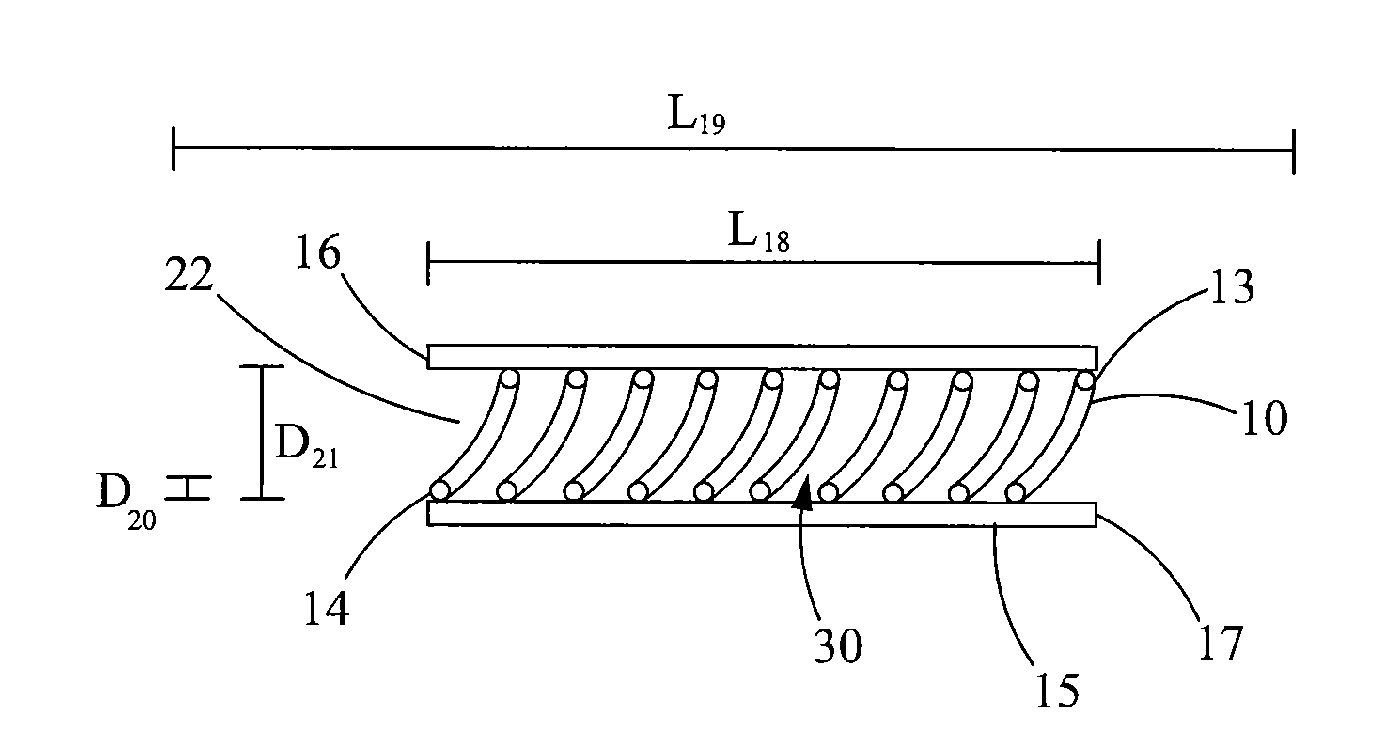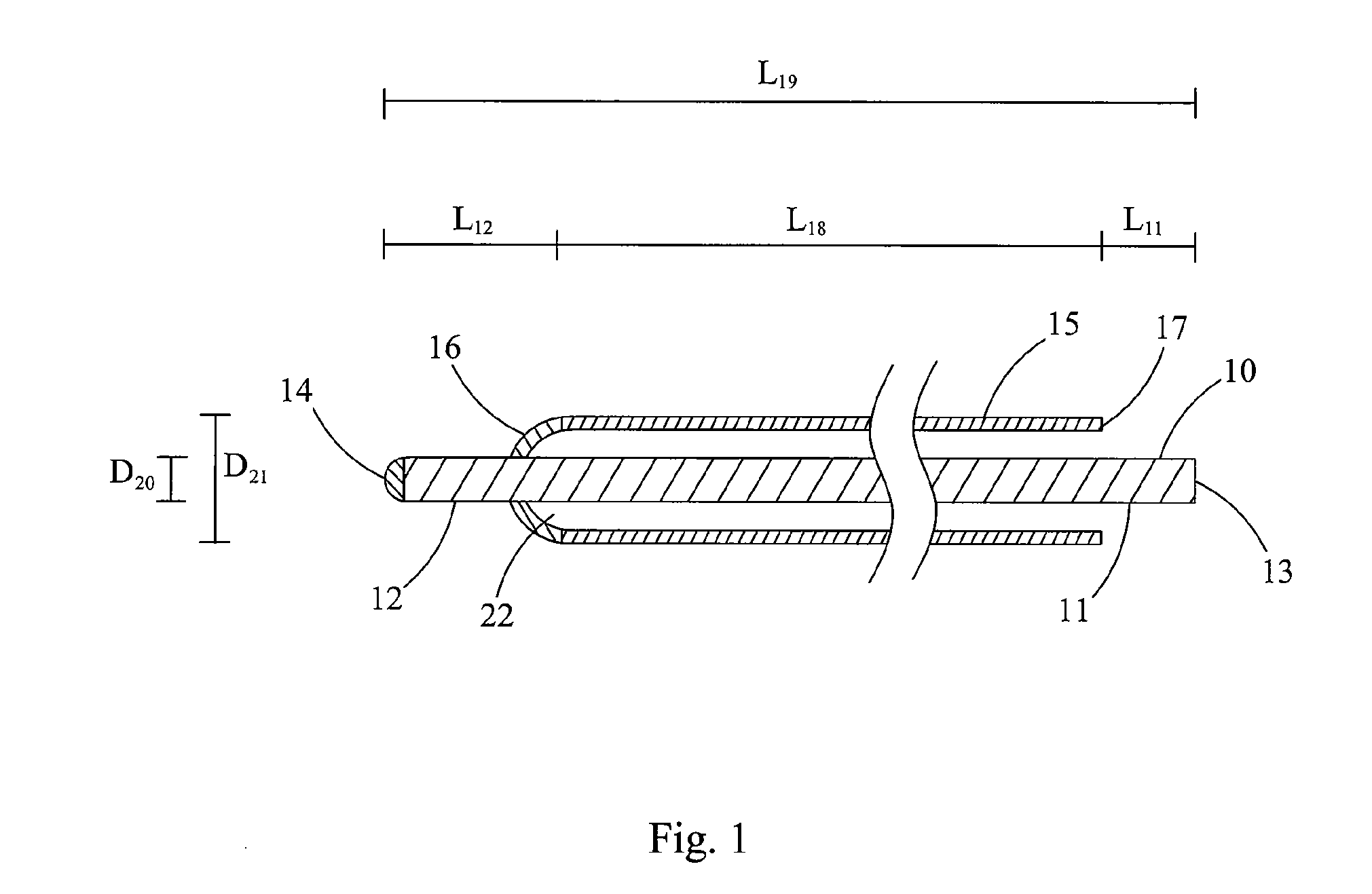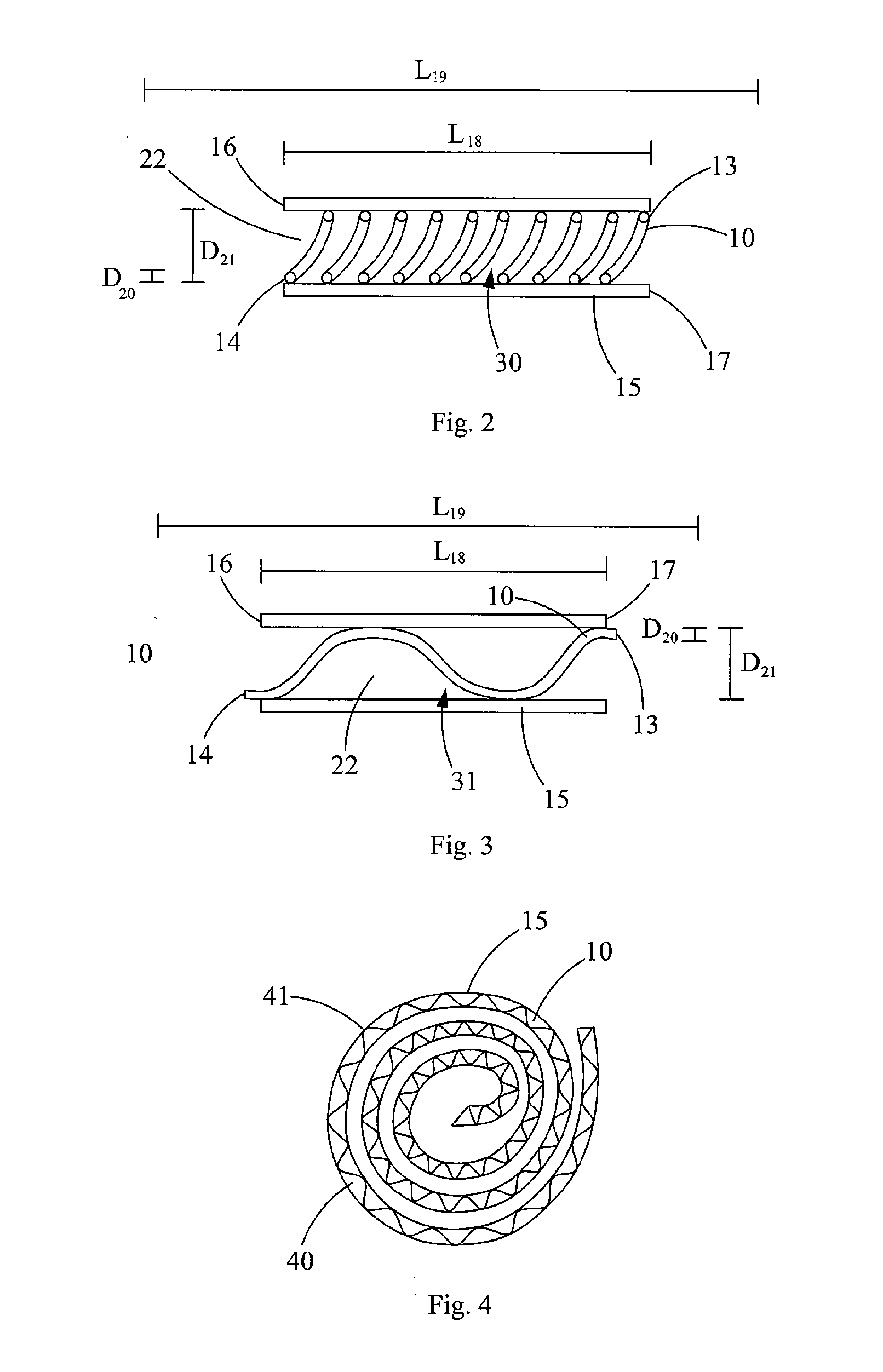Optical fiber configurations for transmission of laser energy over great distances
a technology of optical fibers and lasers, applied in the field of optical fiber configurations, can solve the problems of fiber heating and ultimate failure, failure to deliver high-power laser energy over great distances, and failure to eliminate the phenomenon of stimulated raman scattering (“srs”)
- Summary
- Abstract
- Description
- Claims
- Application Information
AI Technical Summary
Benefits of technology
Problems solved by technology
Method used
Image
Examples
example 1
[0081]Inner radius of the outer protective member, ROPM=1.5 mm (millimeters).
[0082]Outer radius of the fiber (including coating) RF[L]=400 μm (microns).
[0083]Temperature change that the configuration must sustain in the intend use, ΔT [T]=100° C.
[0084]Mechanical strain that configuration must sustain in the intend use, ε=0.0005
[0085]Coefficient of thermal expansion of the fiber, CTEF=0.55*10−6 (1 / C).
[0086]Coefficient of thermal expansion of the outer protective member, CTEOPM=15*10−6 (1 / C).
[0087]Length of outer protective member at ambient temperature and no mechanical strain, LOPM=2 km.
[0088]Minimum bend radius of fiber, RFmin=10 cm.
[0089]Inner radius of a coil (for example of the type shown in FIG. 4) of the configuration, Rcoil=1.5 m.
[0090]Wherein, the AFL[L] for a helical non-following path (for example of the type shown in FIG. 2) is from about 3.89 to about 10.4 m; the AFL[%] for a helical non-following path is from about 0.195% to about 0.517%. Wherein, the AFL[L] for a sinus...
example 2
[0091]Inner radius of the outer protective member, ROPM=3 mm (millimeters).
[0092]Outer radius of the fiber (including coating) RF [L]=250 μm.
[0093]Temperature change that the configuration must sustain in the intend use, ΔT [T]=10° C.
[0094]Mechanical strain that configuration must sustain in the intend use, ε=0.0001.
[0095]Coefficient of thermal expansion of the fiber, CTEF=0.55*10−6 (1 / C).
[0096]Coefficient of thermal expansion of the outer protective member, CTEOPM=15*10−6 (1 / C).
[0097]Length of outer protective member at ambient temperature and no mechanical strain, LOPM=1 km.
[0098]Minimum bend radius of fiber, RFmin=20 cm.
[0099]Inner radius of a coil (for example of the type shown in FIG. 4) of the configuration, Rcoil=1 m.
[0100]Wherein, the AFL[L] for a helical non-following path (for example of the type shown in FIG. 2) is from about 0.245 to about 5.55 m; the AFL[%] for a helical non-following path is from about 0.0245% to about 0.555%. Wherein, the AFL[L] for a sinusoidal non-f...
example 3
[0101]Inner radius of the outer protective member, ROPM=1.6 mm (millimeters).
[0102]Outer radius of the fiber (including coating) RF [L]=100 μm.
[0103]Temperature change that the configuration must sustain in the intend use, ΔT [T]=50° C.
[0104]Mechanical strain that configuration must sustain in the intend use, ε=0.0002.
[0105]Coefficient of thermal expansion of the fiber, CTEF=0.55*10−6 (1 / C).
[0106]Coefficient of thermal expansion of the outer protective member, CTEOPM=26*10−6 (1 / C).
[0107]Length of outer protective member at ambient temperature and no mechanical strain, LOPM=3 km.
[0108]Minimum bend radius of fiber, RFmin=10 cm.
[0109]Inner radius of a coil of the configuration, Rcoil=50 cm.
[0110]Wherein, the AFL[L] for a helical non-following path (for example of the type in FIG. 2) is from about 4.42 to about 18.2 m; the AFL[%] for a helical non-following path is from about 0.147% to about 0.61%. Wherein, the AFL[L] for a sinusoidal non-following path (for example of the type shown in...
PUM
 Login to View More
Login to View More Abstract
Description
Claims
Application Information
 Login to View More
Login to View More - R&D
- Intellectual Property
- Life Sciences
- Materials
- Tech Scout
- Unparalleled Data Quality
- Higher Quality Content
- 60% Fewer Hallucinations
Browse by: Latest US Patents, China's latest patents, Technical Efficacy Thesaurus, Application Domain, Technology Topic, Popular Technical Reports.
© 2025 PatSnap. All rights reserved.Legal|Privacy policy|Modern Slavery Act Transparency Statement|Sitemap|About US| Contact US: help@patsnap.com



